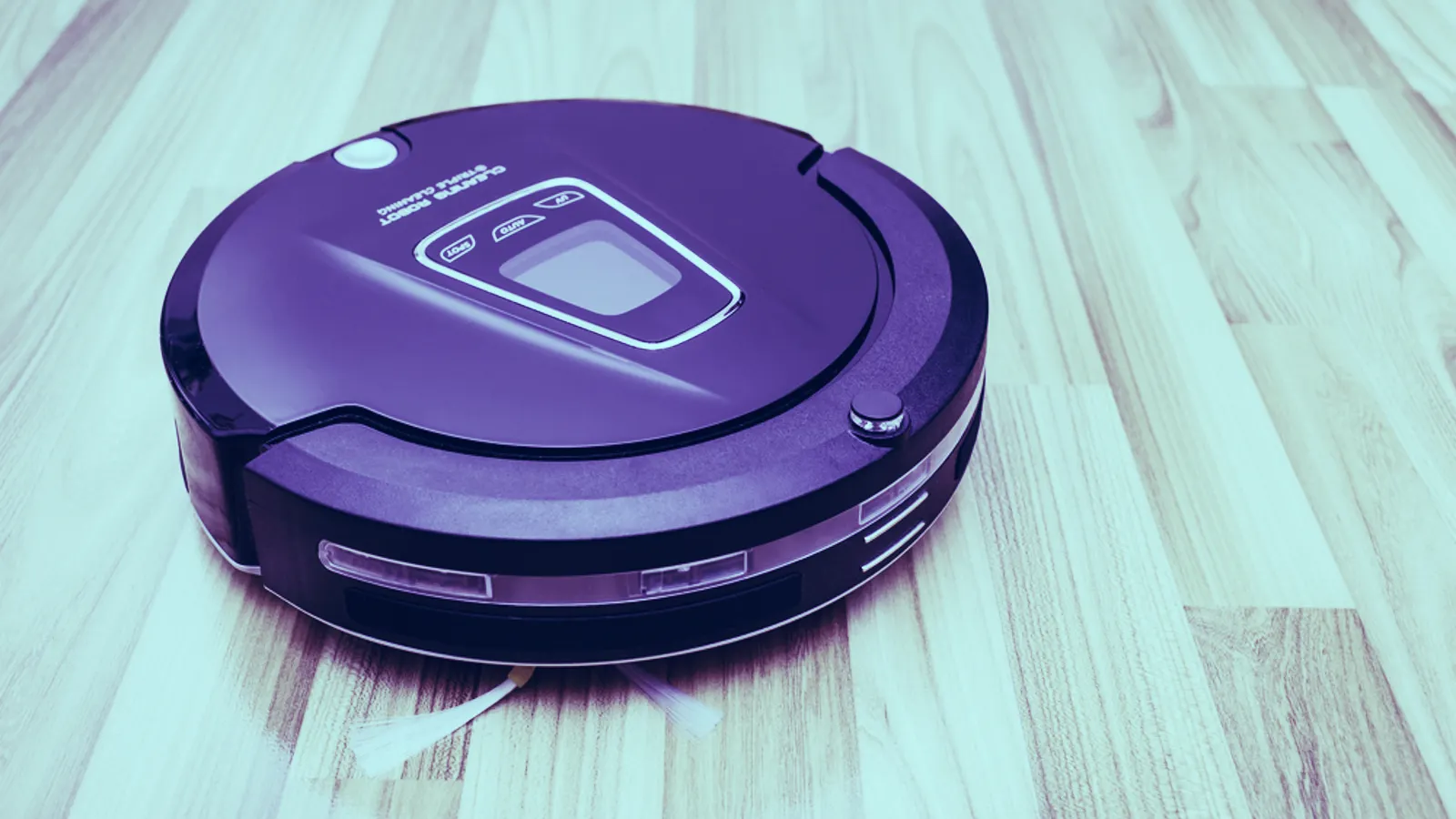Good one @Ben_Munster! The Roomba is being used to represent an autonomous electric vehicle, demonstrating the use of blockchain for autonomous electric vehicle charging payments. We hope you vote for our demo in the #MOBIGrandChallenge! https://t.co/lphWnvrRTJ
— Filament (@FilamentHQ) January 25, 2019
Coin Prices
BTC
$90,579.00
0.68%ETH
$3,094.48
-0.03%XRP
$2.10
0.75%BNB
$889.90
0.61%SOL
$138.15
3.16%USDC
$0.999937
0.01%TRX
$0.293731
-0.80%STETH
$3,092.01
-0.06%DOGE
$0.140552
0.55%FIGR_HELOC
$1.034
0.01%ADA
$0.394132
1.28%BCH
$630.51
1.06%WSTETH
$3,788.78
0.04%WBT
$55.58
-0.22%WBETH
$3,365.29
-0.03%WBTC
$90,257.00
0.67%USDS
$0.999364
-0.05%WEETH
$3,356.57
-0.07%LINK
$13.19
0.27%BSC-USD
$0.998954
-0.00%XMR
$459.82
1.32%LEO
$9.02
0.25%WETH
$3,090.39
-0.16%XLM
$0.228079
0.42%ZEC
$435.00
7.43%CBBTC
$90,487.00
0.61%SUI
$1.81
2.49%USDE
$0.999562
0.03%LTC
$81.23
0.81%HYPE
$25.56
-1.44%AVAX
$13.79
0.05%SHIB
$0.0000087
1.32%HBAR
$0.119229
0.09%CC
$0.135178
-1.51%SUSDS
$1.089
0.47%USDT0
$0.998725
0.00%WLFI
$0.167077
-2.36%TON
$1.76
-4.31%CRO
$0.101088
1.08%PYUSD
$0.999826
0.05%SUSDE
$1.21
-0.01%UNI
$5.47
-0.07%USD1
$0.998881
-0.08%DOT
$2.07
-1.58%MNT
$0.984528
-1.07%RAIN
$0.0085029
-3.20%M
$1.66
0.92%TAO
$286.26
6.14%PEPE
$0.00000617
0.49%AAVE
$165.50
2.02%BGB
$3.54
0.81%XAUT
$4,458.46
0.74%OKB
$109.79
0.59%NEAR
$1.69
0.89%USDF
$0.997543
0.12%JITOSOL
$173.13
3.14%ETC
$12.62
1.38%WETH
$3,090.52
-0.08%ENA
$0.233862
1.75%ICP
$3.21
3.16%PI
$0.208558
0.34%BUIDL
$1.00
0.00%PAXG
$4,469.94
0.84%ASTER
$0.712573
0.58%SOL
$138.18
3.09%JLP
$4.76
1.34%WLD
$0.58049
1.20%HTX
$0.00000168
-0.23%POL
$0.147586
15.33%USDG
$0.999743
0.00%USYC
$1.11
0.00%KCS
$11.46
0.82%BNSOL
$150.90
3.07%SYRUPUSDC
$1.15
0.01%RLUSD
$0.999319
-0.04%HASH
$0.02572665
17.67%APT
$1.79
0.59%PUMP
$0.00225333
7.77%BFUSD
$0.9988
0.01%SKY
$0.056952
-3.08%WBNB
$889.43
0.54%USDC
$0.999797
0.00%RETH
$3,571.51
-0.05%ONDO
$0.402015
-0.61%KAS
$0.04707607
2.74%ATOM
$2.50
1.76%ARB
$0.207657
0.83%ALGO
$0.133417
1.49%GT
$10.19
0.25%NIGHT
$0.070057
-5.84%RENDER
$2.23
6.35%RSETH
$3,280.45
-0.24%FIL
$1.50
1.97%QNT
$74.54
0.45%TRUMP
$5.34
1.16%WSTETH
$3,764.99
-0.41%VET
$0.01171076
0.61%LBTC
$90,599.00
0.58%FBTC
$90,486.00
0.74%SOLVBTC
$90,441.00
0.66%NEXO
$0.970867
2.02%BONK
$0.00001094
2.61%MYX
$4.97
-1.09%FLR
$0.01142033
0.52%XDC
$0.04866348
-0.90%JAAA
$1.022
0.03%USDTB
$0.998538
-0.15%LSETH
$3,294.58
-0.25%USDD
$0.998698
0.06%METH
$3,349.60
-0.36%OUSG
$113.90
0.01%SEI
$0.121553
0.33%WM
$0.999965
0.08%USTB
$10.95
0.01%LIT
$3.03
-2.51%PENGU
$0.0120169
3.25%USDC.E
$0.999814
0.00%WBTC
$90,276.00
0.61%CLBTC
$91,125.00
0.74%BDX
$0.091034
1.71%USDY
$1.11
-0.64%EZETH
$3,301.02
-0.10%VIRTUAL
$1.051
3.93%JUP
$0.215614
2.85%IP
$2.01
0.27%JUPSOL
$160.48
3.19%WFLR
$0.01142731
0.63%MORPHO
$1.22
3.36%USDAI
$1.001
0.74%CAKE
$1.95
1.18%SYRUPUSDT
$1.11
0.08%WETH
$3,093.45
-0.02%FET
$0.280316
3.59%OSETH
$3,278.00
0.48%STX
$0.347992
4.55%DAI
$1.00
0.02%XTZ
$0.580711
3.41%OP
$0.314486
2.53%CRV
$0.405636
-0.03%KHYPE
$25.80
-1.43%EUTBL
$1.22
-0.27%USD0
$0.998851
-0.02%CTM
$0.126871
1.13%SPX
$0.588348
3.01%TBTC
$90,401.00
0.99%LDO
$0.633602
2.46%WETH
$3,090.41
-0.10%INJ
$5.19
2.84%FLOKI
$0.00005331
2.26%AERO
$0.54959
2.00%FDUSD
$0.998829
0.02%GHO
$0.999634
0.08%GTETH
$3,089.81
-0.23%TUSD
$0.997211
-0.00%DASH
$38.70
1.67%ETHFI
$0.741142
1.84%TIA
$0.5534
2.53%MSOL
$186.50
3.07%FTN
$1.088
0.30%CHZ
$0.0455402
3.38%LIQUIDETH
$3,338.14
0.66%JASMY
$0.00914051
10.63%ETHX
$3,331.05
-0.19%GRT
$0.04225649
6.58%SYRUP
$0.390664
7.97%IOTA
$0.104505
2.88%JST
$0.04390305
-0.36%BTT
$0.00000043
0.26%AB
$0.00446234
0.81%WAPE
$0.212896
0.29%PIPPIN
$0.420711
33.82%STRK
$0.082635
0.05%SBTC
$90,736.00
0.36%2Z
$0.118113
3.29%FARTCOIN
$0.405124
4.09%CBETH
$3,462.65
0.05%USDB
$0.985747
-0.94%ENS
$10.44
0.85%STKAAVE
$162.07
-0.65%CFX
$0.077127
2.12%STEAKUSDC
$1.11
0.01%PYTH
$0.068072
3.11%WIF
$0.386945
1.36%BSV
$19.33
0.32%SUN
$0.01999919
-0.56%KAIA
$0.065524
0.62%TWT
$0.901349
1.20%XCN
$0.00864188
-10.10%NFT
$0.00000037
-0.13%GNO
$137.79
0.51%DOGE
$0.140613
0.59%CUSD
$0.996884
-0.25%EURC
$1.16
-0.27%CRVUSD
$0.998851
-0.17%OHM
$21.55
-0.11%BTC.B
$90,523.00
0.63%WSTX
$0.350313
-0.02%TEL
$0.00365898
-1.42%PENDLE
$2.06
-1.45%XPL
$0.168862
4.04%KAU
$143.74
1.00%S
$0.089542
2.51%USR
$0.999524
-0.10%GALA
$0.00715392
0.89%SAVAX
$17.15
0.11%WSTUSR
$1.13
0.05%VSN
$0.089506
-1.32%SAND
$0.11862
1.68%BAT
$0.209135
1.06%RAY
$1.16
2.27%BUSD
$0.999618
0.13%EETH
$3,088.91
-0.16%THETA
$0.305259
2.79%JTRSY
$1.091
0.01%WEETH
$3,353.43
-0.16%USX
$0.999524
0.01%UBTC
$90,489.00
0.66%ZRO
$1.46
6.74%H
$0.161479
1.57%ZBCN
$0.00304029
13.17%FRXETH
$3,085.39
-0.21%KAG
$77.93
3.18%ZK
$0.03366711
1.57%MON
$0.02627263
-1.84%A
$0.175079
1.95%DCR
$16.38
2.10%WETH
$3,086.49
-0.30%FRAX
$0.992537
-0.28%NEO
$3.93
1.44%GLM
$0.275469
4.94%RIVER
$14.00
-14.01%ASBNB
$944.04
0.67%CMETH
$3,351.56
-0.20%MANA
$0.142429
4.12%GTBTC
$90,708.00
0.64%STABLE
$0.01490269
1.90%HNT
$1.43
-2.28%UDS
$2.57
-0.91%COMP
$27.19
2.91%BBTC
$90,512.00
0.74%MERL
$0.240685
0.37%WETH
$3,086.38
-0.37%MWC
$23.11
0.11%WHYPE
$25.57
-1.33%BTSE
$1.56
2.01%SUSDAI
$1.063
0.01%AR
$3.84
2.84%BORG
$0.254192
-0.04%
